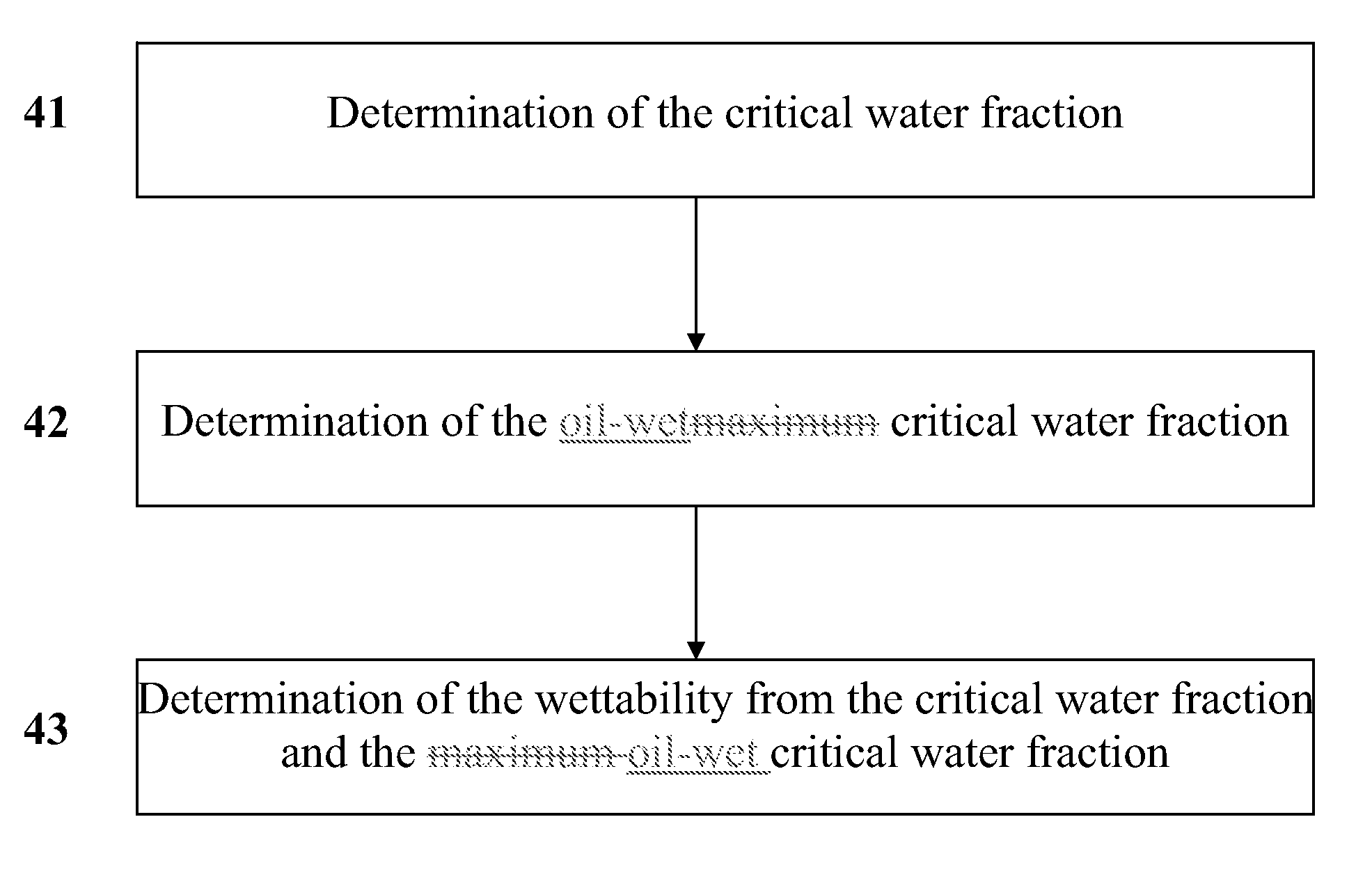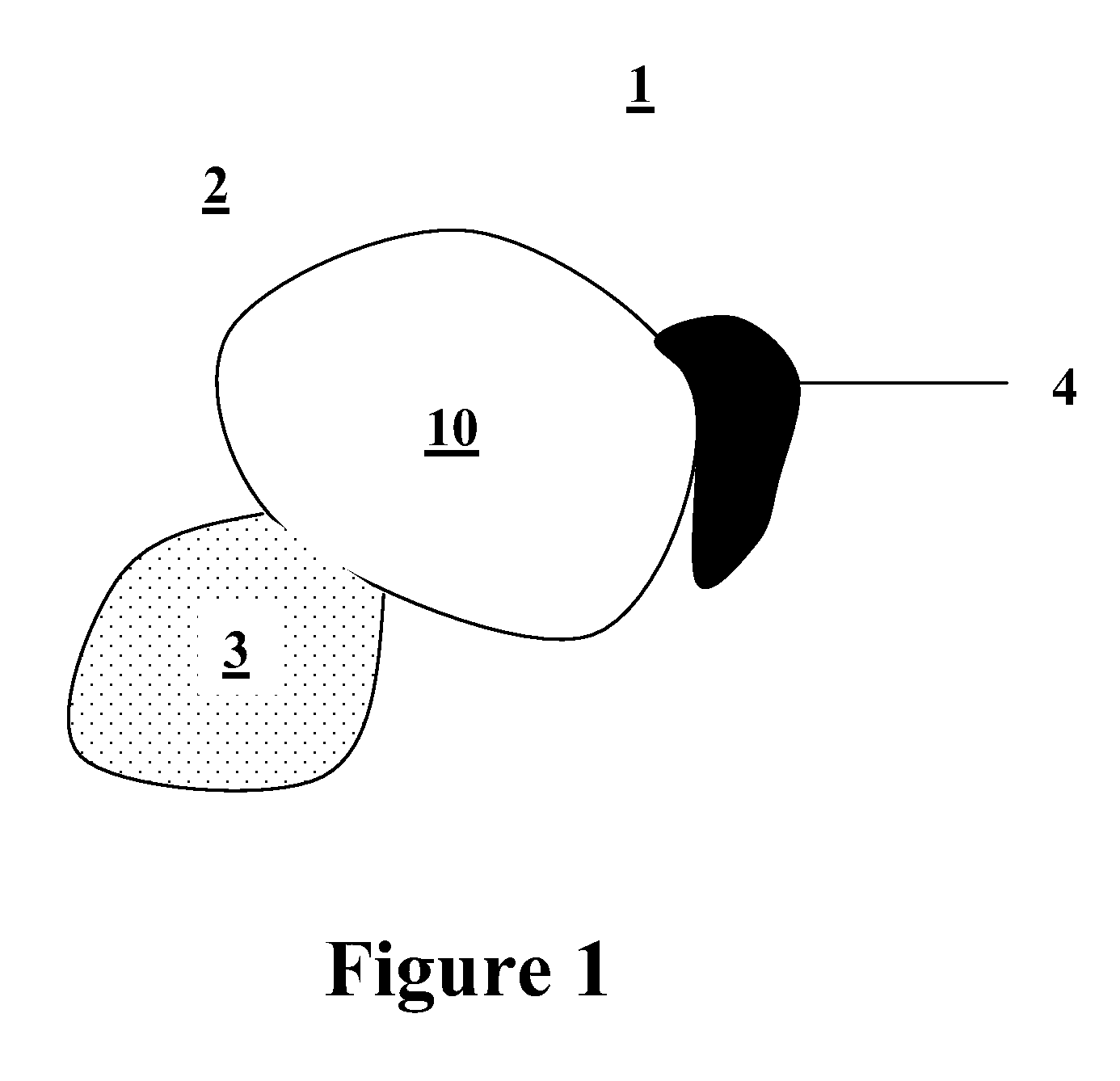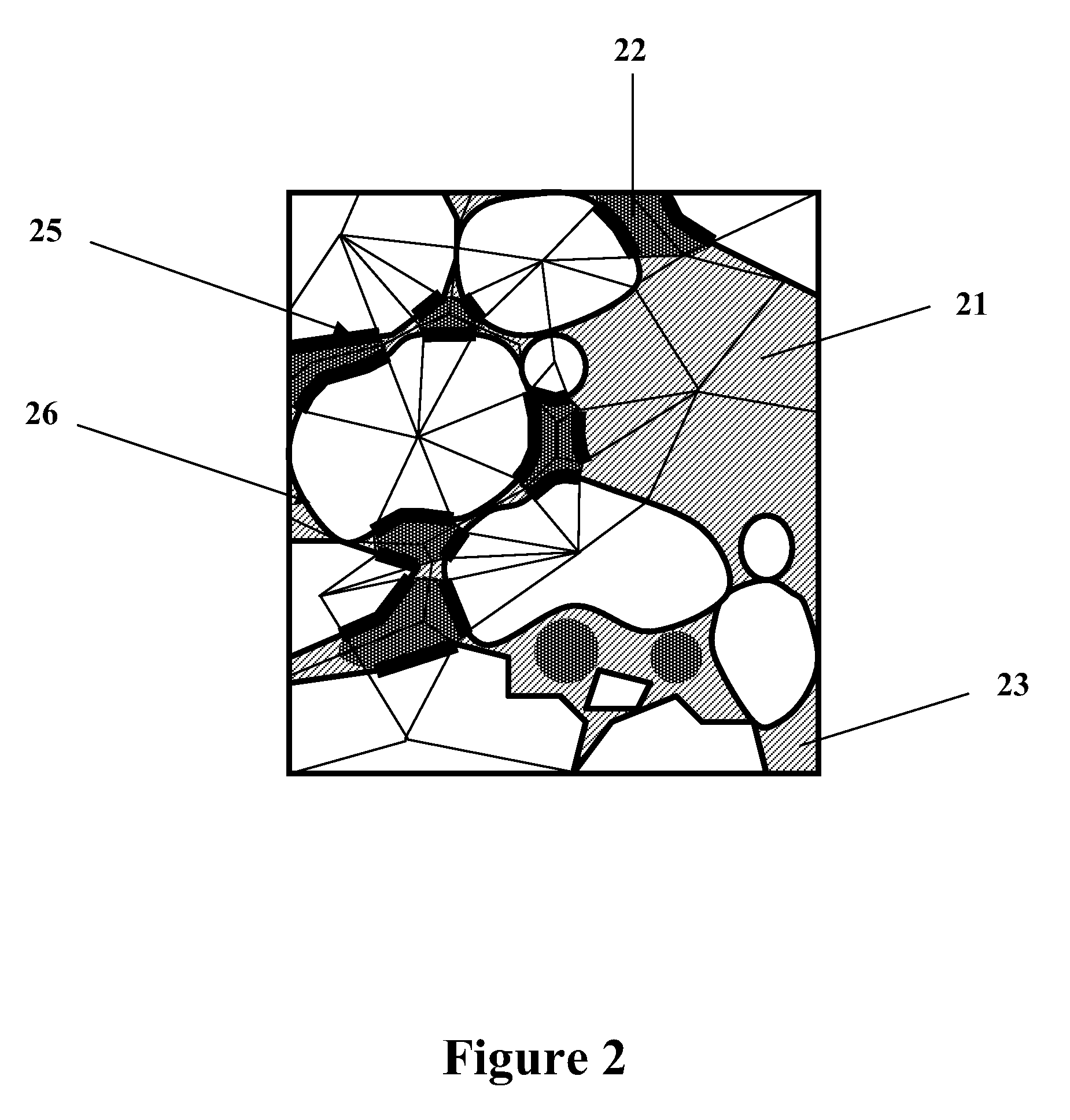Method and apparatus for measuring the wettability of geological formations
a geological formation and oil wettability technology, applied in the field of geological formation characterization, can solve the problems of wasting time and money, unable to use a fixed formula to calculate the saturation of resistivities and porosities to estimate the reserves of a new field, and requiring a costly and time-consuming coring campaign and core analysis study
- Summary
- Abstract
- Description
- Claims
- Application Information
AI Technical Summary
Problems solved by technology
Method used
Image
Examples
Embodiment Construction
[0033]First of all, it is of prime importance to define the term “wettability”. Referring to FIG. 1, any point of the inner surface of the pore of a porous formation 10 can be in direct contact with water 1, oil 2, gas 3 or hydrocarbon in solid form 4 such as bitumen and asphaltenes. The fraction of the total porous medium surface covered with water (water-wet) is called the structural water-wetting index Jw. The fraction of the surface covered with oil is Yo, the fraction covered with tar or asphaltenes is YT and the remaining surface fraction is YG and one has JW+YO+YT+YG=1. A pore can have its surface partially covered by water and partially by oil, but we expect also to find pores entirely water-wet or entirely oil-wet. It is simpler to consider the water-wetting index Jw and the remaining fraction 1−JW. In the rest of the document, we will define 1−JW to be the “oil-wetting index” Jo to be understood as the hydrocarbon-wetting index with Jw+Jo=1.
[0034]With the above definitions...
PUM
 Login to view more
Login to view more Abstract
Description
Claims
Application Information
 Login to view more
Login to view more - R&D Engineer
- R&D Manager
- IP Professional
- Industry Leading Data Capabilities
- Powerful AI technology
- Patent DNA Extraction
Browse by: Latest US Patents, China's latest patents, Technical Efficacy Thesaurus, Application Domain, Technology Topic.
© 2024 PatSnap. All rights reserved.Legal|Privacy policy|Modern Slavery Act Transparency Statement|Sitemap



